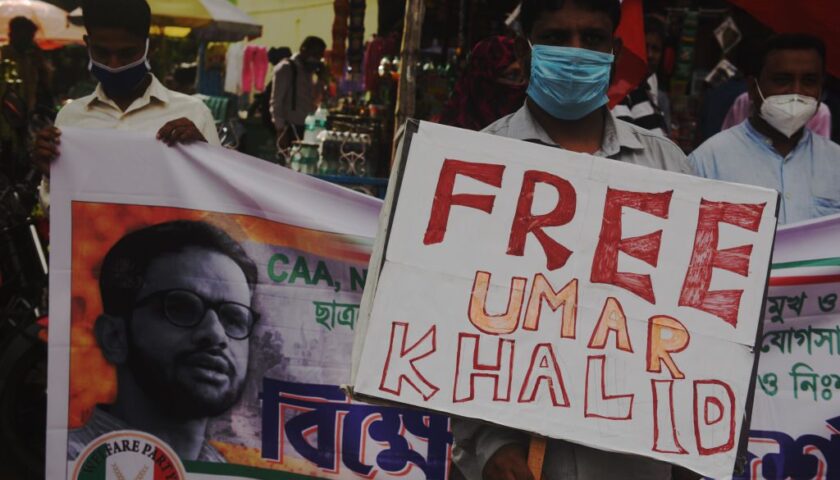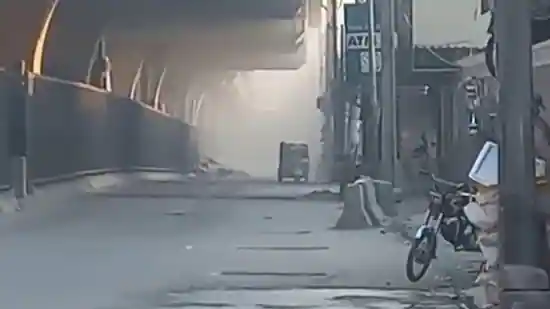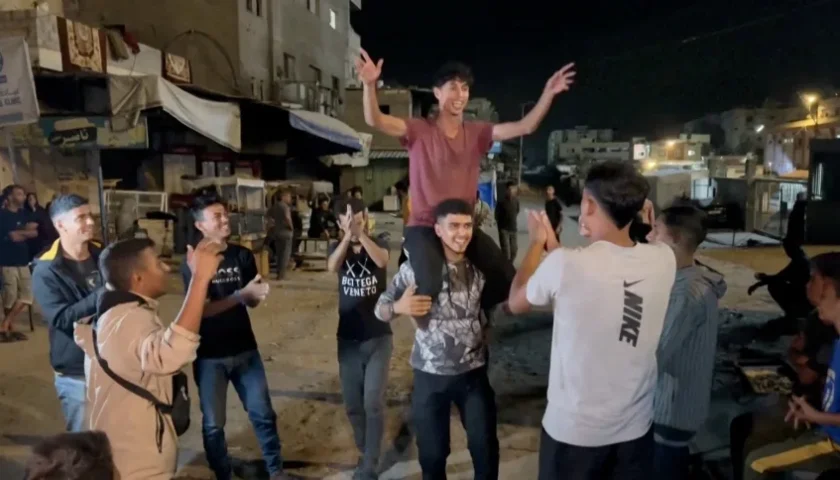June 21, 2025 | Washington / Tehran / Tel Aviv
The Middle East stands on the brink—again. But this time, the scale of escalation has entered uncharted territory.
In a dramatic shift from deterrence to direct confrontation, former U.S. President Donald Trump—speaking after massive U.S. airstrikes on Iran’s nuclear facilities—has issued a chilling ultimatum: “Iran’s retaliation will be met with greater force. It’s peace or tragedy. Choose wisely.”
The strikes, carried out using the GBU-57 Massive Ordnance Penetrators (MOPs)—the most powerful non-nuclear bombs in the American arsenal—targeted three critical nuclear facilities: Fordow, Natanz, and Isfahan. The attack has effectively disabled Iran’s underground uranium enrichment infrastructure, setting the stage for what may be the most dangerous standoff in decades.
A New Phase in the Iran Conflict: From Shadow War to Open Skies
While Israel and Iran have long exchanged blows through proxies and cyber warfare, this direct kinetic strike by the U.S. on Iranian soil marks a strategic rupture.
U.S. stealth bombers reportedly deployed bunker buster bombs capable of penetrating 200+ feet of reinforced concrete, in a coordinated strike that crippled Iran’s underground nuclear bunkers—facilities that have been at the center of Western fears about a potential nuclear breakout.
“It was a spectacular military success,” Trump declared in a nationally televised address, flanked by American flags and a tightened security perimeter.
But success, as Trump defines it, is only half the story. The real conflict is only just beginning.
Iran’s Fury: ‘Every American is Now a Target’
The Iranian response was immediate, furious, and defiant. The Atomic Energy Organization of Iran called the U.S. action a “blatant violation of international law”, describing it as an act of war and warning of “consequences that will make the aggressors regret their crime.”
State-affiliated channels carried footage of public mourning mixed with militant mobilization, with banners declaring:
“Every American, military or civilian, is now a legitimate target.”
Meanwhile, Iran’s Islamic Revolutionary Guard Corps (IRGC) has reportedly gone on high alert, and proxy militias in Iraq, Syria, and Lebanon have been ordered to prepare for retaliatory operations.
Khamenei’s Inner Circle Calls to Strike U.S. Navy, Shut Hormuz
Hossein Shariatmadari, a powerful hardliner and close aide to Supreme Leader Ayatollah Ali Khamenei, took to state media with an incendiary call: “Target the U.S. naval fleet in Bahrain. Shut down the Strait of Hormuz. Retaliate with full force.”
Though not an official government directive, Shariatmadari’s remarks often mirror the tone of Iran’s inner military-political elite, hinting at possible strategic moves under consideration.
The Strait of Hormuz, through which over 20% of the world’s oil passes, remains a critical flashpoint. Even a temporary closure could skyrocket global oil prices, spark maritime confrontations, and draw in NATO-aligned naval forces.
The Weapon of the Moment: What Is the MOP?
The Massive Ordnance Penetrator (MOP)—or GBU-57—is the largest non-nuclear bomb in the U.S. arsenal. Dropped by B-2 stealth bombers, the 30,000-pound weapon is designed to obliterate deep-earth bunkers.
According to defense analysts:
-
Fordow, one of Iran’s most secure nuclear facilities, is buried beneath 80 meters of rock
-
The MOP, with precision GPS guidance, can penetrate over 200 feet of reinforced concrete
-
This is believed to be the first operational use of MOPs against a sovereign state’s nuclear infrastructure
The message is unmistakable: The U.S. is willing to use every non-nuclear tool in its arsenal to prevent Iran from acquiring nuclear weapons—regardless of international fallout.
Trump’s Speech: Peace, Power, or Political Play?
In his address, Trump walked a fine line between projection of strength and appeal for restraint. His key points:
-
Iran must not retaliate; if it does, “the next wave will be far greater and a lot easier.”
-
The strikes were “surgical and defensive”, aimed at “removing the nuclear threat.”
-
He held the door open for negotiations, saying, “We prefer peace, but we are not afraid of victory.”
“Iran can choose to de-escalate and return to diplomacy—or choose tragedy.”
Yet critics argue that Trump’s tone was more theatrical than tactical, potentially cornering Iran into retaliation to save face and legitimacy at home and among its allies.
Global Fallout: Israel’s Airspace Closes, Russia Condemns
Following the strikes:
-
Israel shut down its airspace for 48 hours in anticipation of Iranian retaliation.
-
Russia, a key Iranian ally, warned the U.S. and Israel against further provocations, stating that an attack on Iran’s leadership would have “grave global consequences.”
-
The UN Security Council is set to convene an emergency session, but with the U.S. and Russia at odds, meaningful resolutions seem unlikely.
What Comes Next: 3 Scenarios on the Table
01. Iran Strikes Back (Likely)
-
Missile attacks on U.S. bases in Iraq/Syria
-
Proxy attacks via Hezbollah in Lebanon or Houthis in the Red Sea
-
Possible targeting of U.S. diplomatic missions or shipping lanes
02. Controlled Escalation
-
Iran retaliates symbolically, avoiding direct American casualties to prevent full-scale war
-
U.S. responds with economic or cyber sanctions
03. Outright War (Worst-Case)
-
Iran targets U.S. Navy or Israel directly
-
U.S. responds with overwhelming force, triggering regional war involving Iraq, Lebanon, Syria, and possibly Gulf states
The Bigger Picture: Politics, Oil, and a World on Edge
Beyond the battlefield, this escalation is deeply rooted in political timing:
-
Trump is positioning himself as a strongman candidate for 2024, using foreign policy flashpoints to rally his base.
-
Iran, isolated and economically battered, may find retaliation a political necessity to preserve internal cohesion.
-
Global oil markets are already rattled, with crude prices surging 12% overnight and analysts warning of $150-a-barrel scenarios if the Strait of Hormuz is targeted.
This is no longer just a Middle Eastern crisis. It is a global one—with Asia’s oil supply, Europe’s diplomacy, and America’s elections hanging in the balance.
Bottom-Line: The Red Line Has Been Crossed—Will Anyone Step Back?
When bunker busters fall on nuclear facilities, there’s no such thing as a limited strike. What we are witnessing is not just a show of military might—it is a collision of ideologies, ambitions, and hard power.
Trump has drawn the red line in concrete and fire, challenging Iran to cross it—or stand down. Tehran, humiliated but hardened, may feel it has no option but to strike back.
The world now watches, breath held and nerves frayed, as the specter of regional war—and global fallout—looms ever closer.




